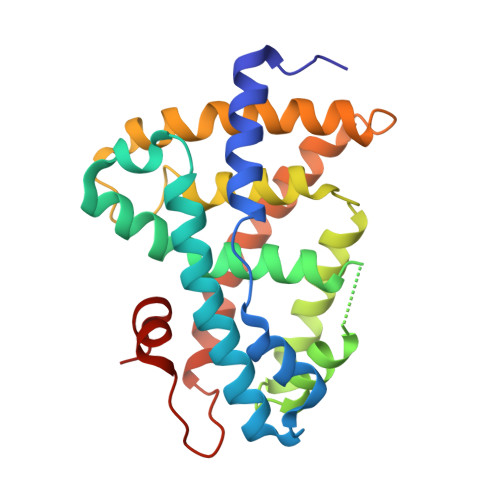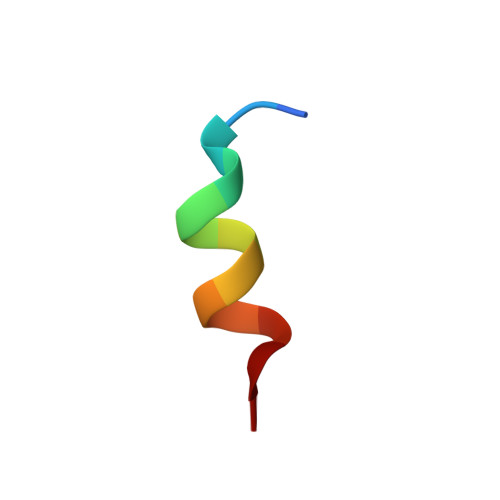Molecular tuning of farnesoid X receptor partial agonism.
Merk, D., Sreeramulu, S., Kudlinzki, D., Saxena, K., Linhard, V., Gande, S.L., Hiller, F., Lamers, C., Nilsson, E., Aagaard, A., Wissler, L., Dekker, N., Bamberg, K., Schubert-Zsilavecz, M., Schwalbe, H.(2019) Nat Commun 10: 2915-2915
- PubMed: 31266946
- DOI: https://doi.org/10.1038/s41467-019-10853-2
- Primary Citation of Related Structures:
6HL0, 6HL1 - PubMed Abstract:
The bile acid-sensing transcription factor farnesoid X receptor (FXR) regulates multiple metabolic processes. Modulation of FXR is desired to overcome several metabolic pathologies but pharmacological administration of full FXR agonists has been plagued by mechanism-based side effects. We have developed a modulator that partially activates FXR in vitro and in mice. Here we report the elucidation of the molecular mechanism that drives partial FXR activation by crystallography- and NMR-based structural biology. Natural and synthetic FXR agonists stabilize formation of an extended helix α11 and the α11-α12 loop upon binding. This strengthens a network of hydrogen bonds, repositions helix α12 and enables co-activator recruitment. Partial agonism in contrast is conferred by a kink in helix α11 that destabilizes the α11-α12 loop, a critical determinant for helix α12 orientation. Thereby, the synthetic partial agonist induces conformational states, capable of recruiting both co-repressors and co-activators leading to an equilibrium of co-activator and co-repressor binding.
- Institute of Pharmaceutical Chemistry, Goethe University, Frankfurt, 60348, Germany. merk@pharmchem.uni-frankfurt.de.
Organizational Affiliation:


















